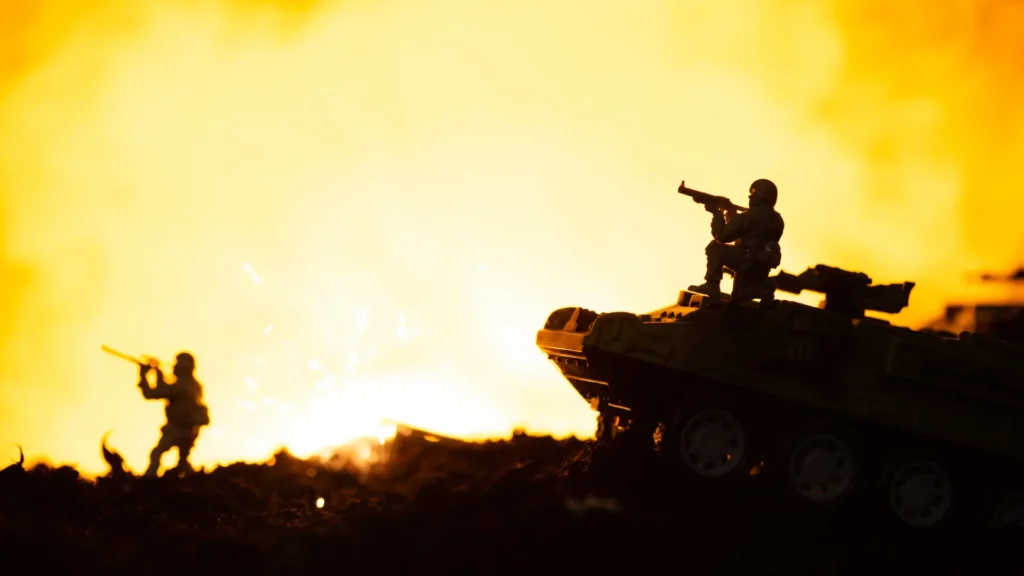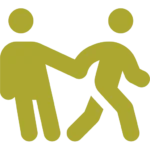The Clash of Civilisations in a nutshell
Samuel Huntington argued that after the Cold War, the main source of global conflict would no longer be ideological (capitalism vs communism) or straightforward interstate rivalry. Instead, he said we’d be living through a clash of civilisations, which are broader cultural groupings. For example, the Western, Islamic, Hindu and so on. He expected conflict to flare along “fault lines” where these civilisations meet and predicted tension in “torn countries” whose elites and publics pull in different cultural directions.
Uppsala University claim that there were 61 state-based conflicts in 2024, which is the most since records began in 1946. The nature of war is changing, with many countries involving themselves with security and intelligence services in the background. The Clash of Civilisations theory can help to explain these conflicts.
Does the Clash of Civilisations fit in 2025?
1) Israel–Palestine
In the example of the Israel-Palestine conflict, we clearly see a clash of civilisations as described by Huntington. Religion in this case clearly shaped the narratives, alliances and public response. The Iran–Israel escalation and the way regional actors framed events often look like the kind of civilisational fault-line Huntington sketched. This supports the idea that culture matters. We saw strong support for Israel through the Trump administration in the US, alongside Western allies in Europe. However, the public’s support for Palestine was strong too.
However, strategic interests, deterrence, alliance commitments and domestic politics also drive choices. Military defence cooperation, great-power involvement (like that of the US), and regime security concerns show that realism explains a lot that “civilisation” alone cannot, such as individual state priorities and security concerns. Therefore, whilst the clash of civilisations can be strongly used in this example, it’s not the only explanation.
2) Russia–Ukraine
Huntington might label this as a clash of civilisations between the Western and Orthodox worlds. However, the invasion may be more convincingly explained by power politics, security dilemmas, imperial legacies and sovereignty claims. It’s no secret that Putin wants Russia to return to its once-great state, and the acquisition of Ukraine is a step on that journey. Cultural identity features in propaganda on both sides.
The Western world was quick to condemn Russia’s aggression and offer support to Ukraine, but how much of this is out of diplomacy as opposed to maintenance of the current hegemonic structure? It’s clear to see geopolitical strategy rather than a clash of civilisations explaining this conflict.
3) Civil Wars Within Civilisations (e.g., Sudan, Myanmar, Yemen)
Many of today’s deadliest conflicts occur within supposed civilisations. That undermines the idea that the most important fault lines are between civilisational blocs. It suggests we should pay attention to state weakness, resource struggles, regime type, ethnic politics, and external intervention, which are factors that cut across Huntington’s map.
Criticisms of the Clash of Civilisations theory
- Over-simplifying identity: People have multiple, overlapping identities (national, ethnic, religious, ideological). Reducing them to a single civilisational label is crude and can mislead analysis.
- Improper evidence: The most common wars in recent decades have been civil wars or internationalised civil wars, not wars of “West vs Islam” or “Sinic vs West.”
- Moving targets: Civilisations aren’t static, as values and alliances shift. Globalisation, institutions and interdependence often mute cultural divides.
- Alternative “clashes”: Some scholars argue the deepest divides today centre on gender and social norms rather than grand civilisational blocs. These are still cultural, but not the borders Huntington drew.
These critiques are AO2 gold for your essays: acknowledge where the theory creates patterns, then show where it breaks down.
Conclusion
Huntington’s Clash of Civilisations illustrates something real about the cultural framing of conflict in the post-Cold War era. However, it’s clear that power politics, domestic regimes and international institutions complicate the theory that he put forward. In your essays, use current cases to demonstrate both the ‘pull’ of culture and the limits of the “clash” idea, then land a clear, balanced judgement.
If you want to know more about how to use these theories in your essays, sign up for a Study Dog membership. Our Global Politics resources help you understand the comparative theories and their application to other topics.

































